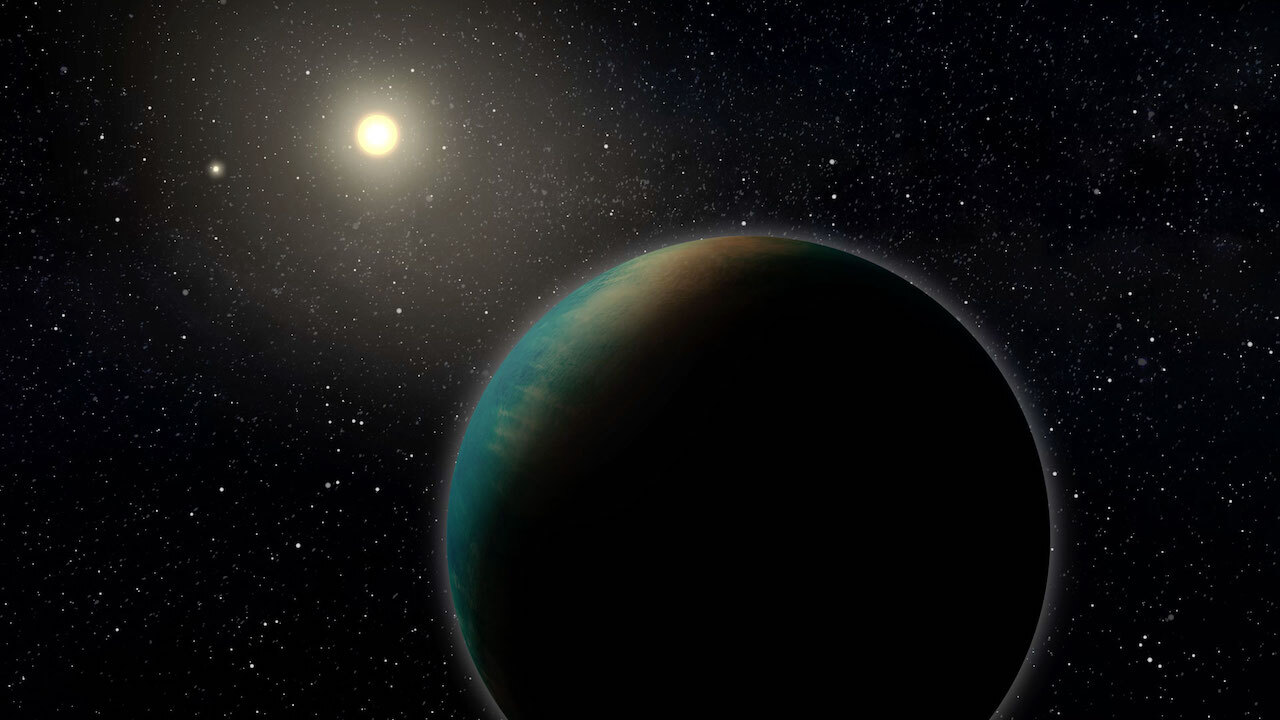 VIEW LARGER Artist's illustration of an Earth-type exoplanet.
VIEW LARGER Artist's illustration of an Earth-type exoplanet. Astronomers are looking more closely at far-away exoplanets that are a lot like Earth, only bigger.
University of Arizona researcher Chris Impey says many of them could be water-covered worlds that might harbor life.
Oceans cover 71% of the Earth's surface but they only account for a small percentage of our planet's total mass.
Impey notes a super-Earth’s mass is much larger, so there’s likely more water there.
“The Earth is actually a fairly dry planet. The percentage of mass that’s in the oceans is less than a tenth of a percent," he said. "You could find super-Earths with 10% of their mass in oceans. So, if you need water for life, there’s tons of water.”
Scientists have discovered thousands of exoplanets orbiting distant stars, with thousands more yet to be confirmed.
Impey explains that super-Earths are the most common type of exoplanet, with the nearest one only 6 light years away from our own world.

By submitting your comments, you hereby give AZPM the right to post your comments and potentially use them in any other form of media operated by this institution.